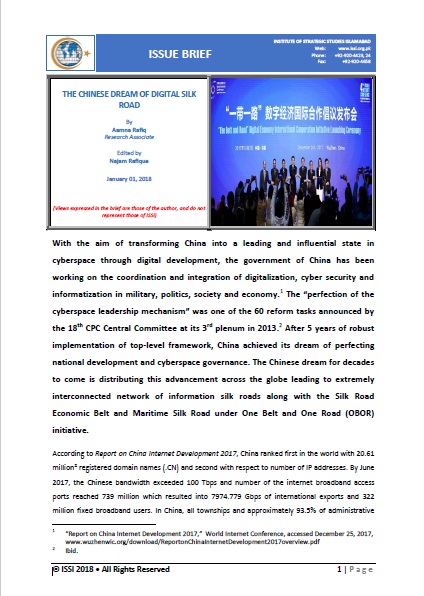With the aim of transforming China into a leading and influential state in cyberspace through digital development, the government of China has been working on the coordination and integration of digitalization, cyber security and informatization in military, politics, society and economy.[1] The “perfection of the cyberspace leadership mechanism” was one of the 60 reform tasks announced by the 18th CPC Central Committee at its 3rd plenum in 2013.[2] After 5 years of robust implementation of top-level framework, China achieved its dream of perfecting national development and cyberspace governance. The Chinese dream for decades to come is distributing this advancement across the globe leading to extremely interconnected network of information silk roads along with the Silk Road Economic Belt and Maritime Silk Road under One Belt and One Road (OBOR) initiative.
According to Report on China Internet Development 2017, China ranked first in the world with 20.61 million² registered domain names (.CN) and second with respect to number of IP addresses. By June 2017, the Chinese bandwidth exceeded 100 Tbps and number of the internet broadband access ports reached 739 million which resulted into 7974.779 Gbps of international exports and 322 million fixed broadband users. In China, all townships and approximately 93.5% of administrative villages have access to broadband. The total mobile communication is 1.36 billion which includes 890 million 4G users. This extensive digital network became a “new engine” of the economic development of China. The digital economy contributes 30.3% of China`s GDP (22.58 trillion Yuan) which is second largest in the world. It is ranked first with respect to the volume of online retail sale of 5.2 trillion Yuan. Today, there are 467 million online customers of China with online transaction volume of 26.1 trillion Yuan.[3]
















